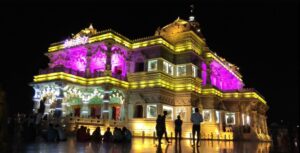Climate of Indian Plateaus – The Indian subcontinent boasts diverse geographical features, and among them, plateaus hold a unique position. Defined by elevated flat surfaces, plateaus play a crucial role in shaping the climate of the regions they cover. In this article, we will delve into the intricacies of the climate on Indian plateaus, exploring various factors influencing it and the broader implications for biodiversity, human activities, and conservation efforts.
Factors Influencing Climate
Altitude is a paramount factor affecting the climate of Indian plateaus. As one ascends, temperatures drop, leading to distinct variations in climate across different altitudes. Monsoons, a vital component of Indian climate, also contribute significantly to the weather patterns on plateaus. Understanding wind patterns is crucial, as they influence temperature and precipitation.
Seasonal Variations
The seasons on Indian plateaus exhibit distinctive characteristics. Summers are marked by elevated temperatures, posing challenges for both flora and fauna. Monsoon seasons bring relief but also contribute to landslides. Winters witness temperature fluctuations, impacting local ecosystems.
Biodiversity and Climate Adaptations
Plateau regions are home to a rich array of flora and fauna, each uniquely adapted to the specific climate conditions. Understanding these adaptations provides insights into the resilience of ecosystems on Indian plateaus.
Human Impact on Plateau Climate
Human activities, such as urbanization and agricultural practices, have profound effects on plateau climates. Rapid urbanization alters local climates, and unsustainable agricultural practices exacerbate environmental issues.
Challenges and Solutions
Climate change poses challenges to plateau regions. Adopting sustainable practices is imperative for mitigating these challenges. Conserving water resources and promoting eco-friendly agriculture are crucial steps toward a resilient plateau climate.
Importance of Conservation
Preserving the unique climate features of plateaus is essential. Local communities play a pivotal role in conservation efforts, safeguarding the delicate balance of ecosystems on these elevated landscapes.
Tourism and Plateau Climate
Plateau climates, with their scenic beauty and diverse ecosystems, attract tourists. However, sustainable tourism practices are essential to prevent negative impacts on the environment.
Comparative Analysis
Contrasting plateau climates across regions provides valuable insights. Learning from the experiences of other countries can inform sustainable practices for maintaining plateau ecosystems.
Case Studies
Exploring notable plateau regions in India and examining the impacts of climate change on specific plateaus deepens our understanding of the challenges these regions face.
Future Outlook
Predicting the future climate of Indian plateaus is vital for planning adaptation strategies. Implementing measures for climate resilience ensures the sustainability of plateau ecosystems.
Conclusion
In conclusion, the climate of Indian plateaus is a dynamic and intricate system shaped by various factors. Understanding and appreciating these unique climates are crucial for fostering sustainable development and conservation efforts.
Frequently Asked Questions
- Are all plateaus in India characterized by similar climates?
- No, the climate on Indian plateaus varies based on factors such as altitude, location, and geographical features.
- How do plateaus contribute to the overall biodiversity of India?
- Plateaus provide diverse ecosystems, offering habitats for a wide range of flora and fauna, contributing significantly to India’s biodiversity.
- What are the major challenges posed by climate change on Indian plateaus?
- Climate change on plateaus leads to increased temperatures, altered precipitation patterns, and poses threats to the delicate balance of ecosystems.
- How can individuals contribute to the conservation of plateau climates?
- Individuals can contribute by adopting sustainable practices, promoting conservation awareness, and supporting local initiatives focused on plateau ecosystems.
- Is tourism beneficial or harmful to plateau environments?
- Tourism, if managed sustainably, can bring economic benefits to plateau regions. However, uncontrolled tourism can lead to environmental degradation.



